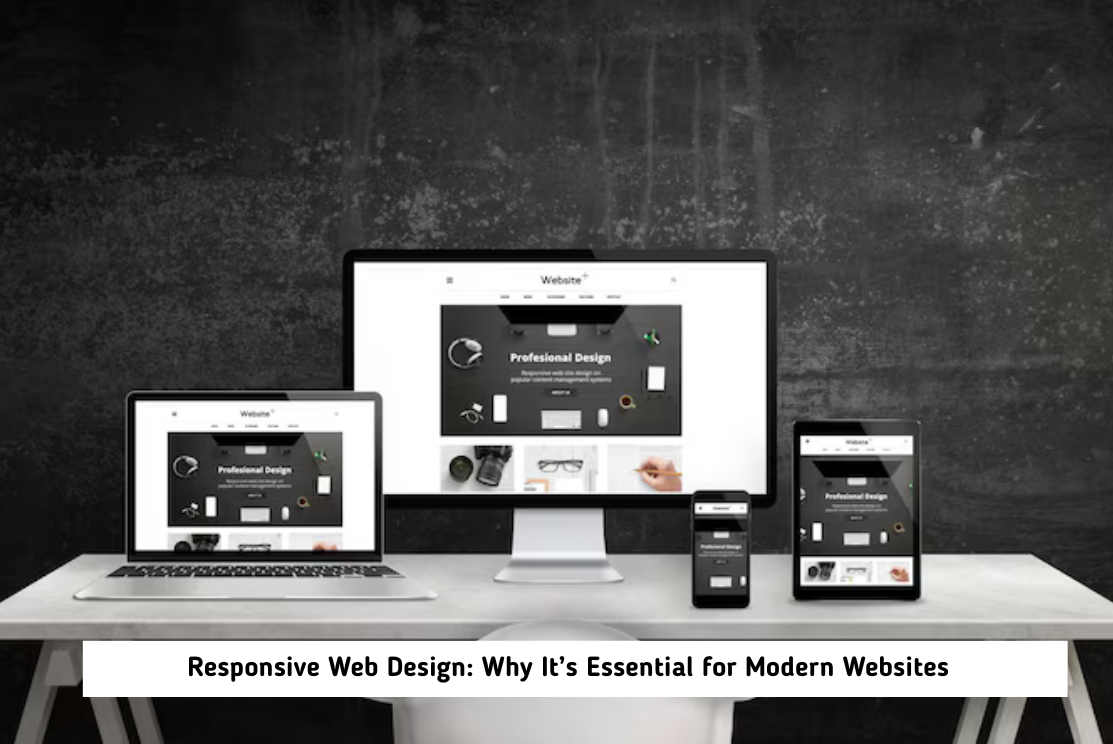In today’s digital age, the way people access websites has changed dramatically. With a wide variety of devices available—smartphones, tablets, laptops, desktops, and even smart TVs—websites must be adaptable to different screen sizes and resolutions. This is where responsive web design (RWD) becomes critical.
Responsive web design is the approach of designing and developing websites to provide an optimal viewing experience across all devices. It ensures that a website’s layout, images, and functionalities automatically adjust and scale to fit any screen size. This blog will explain what responsive web design is, why it matters, its key principles, and how to implement it effectively.
What is responsive web design?
Responsive web design is a technique that uses flexible grids, layouts, images, and CSS media queries to create a website that responds dynamically to the user’s device screen size, orientation, and platform. Instead of creating separate websites for desktop and mobile, a responsive site serves the same HTML content but adapts its appearance for each device.
For example, on a desktop, a website might display a full multi-column layout with large images and menus, while on a smartphone, the same website reorganizes the content into a single column with touch-friendly buttons and optimized images for faster loading.
Why is responsive web design important?
- Mobile Usage Dominance Over half of all internet traffic worldwide now comes from mobile devices. People expect websites to work seamlessly whether they’re browsing on a phone during a commute or using a tablet at home. A non-responsive website can frustrate mobile users with tiny text, difficult navigation, and slow load times, leading to high bounce rates.
- Improved User Experience Responsive design offers a consistent and smooth user experience regardless of the device. Visitors can easily read content, click buttons, and navigate without zooming or horizontal scrolling. This enhanced usability increases the chances of visitors staying longer and converting into customers.
- SEO Benefits Google prioritizes mobile-friendly and responsive websites in its search engine rankings. A single responsive website with the same URL and HTML makes it easier for Google’s bots to crawl, index, and organize content compared to separate desktop and mobile sites. This helps improve your search engine visibility.
- Cost-Effectiveness Maintaining separate desktop and mobile sites requires additional time, resources, and budget. Responsive design streamlines development and maintenance by using one site that works everywhere. This reduces costs and simplifies content updates.
- Future-Proofing With new devices and screen sizes continuously emerging, responsive design provides flexibility. Your website will adapt to future devices without needing a complete redesign, ensuring longevity and relevance.

Core Principles of Responsive Web Design
Responsive web design is built on several core principles that guide how websites should adapt:
- Flexible Grid Layouts: Instead of fixed pixel-based layouts, responsive websites use fluid grids based on relative units like percentages. This allows page elements to resize proportionally according to the screen width.
- Flexible Images and Media: Images and media are set to scale within their containers. This prevents images from overflowing or appearing too large on smaller screens. CSS properties like `max-width: 100%` ensure images resize automatically.
- CSS Media Queries: Media queries detect device characteristics such as screen width, height, resolution, and orientation. Based on these parameters, different CSS rules are applied to adjust layouts, font sizes, navigation styles, and more for each device.
- Mobile-First Design: A popular approach in responsive design is starting with the mobile version first and progressively enhancing it for larger screens. This ensures the website’s core functionality works well on small devices before adding complexity for desktops.
- Touch-Friendly Interactions: Responsive websites optimize buttons, links, and other interactive elements to be easy to tap on touchscreens, avoiding frustration from tiny or closely packed controls.
How to Implement Responsive Web Design Effectively
Creating a truly responsive website involves a mix of design best practices and technical implementation:
- Plan Your Content and Layout: Start by analyzing your content and determining how it should be prioritized on different devices. Mobile users tend to look for quick information and easy navigation. Use wireframes to plan layouts for various screen sizes.
- Use a Responsive Framework or Grid System: Frameworks like Bootstrap, Foundation, or CSS Grid provide ready-made responsive grids and components that simplify building responsive layouts. They save time and ensure cross-browser compatibility.
- Write flexible CSS: Avoid fixed widths and heights. Use relative units such as percentages, `em`, and `rem` for sizing. Employ media queries to change styles at breakpoints where the design needs to adjust for different screen widths.
- Optimize Images and Media: Use image formats like WebP for better compression without losing quality. Serve appropriately sized images using the `srcset` and `sizes` attributes in HTML to load smaller images on mobile devices.
- Test Across Devices and Browsers: Regularly test your website on multiple devices—smartphones, tablets, and desktops—and browsers to ensure it displays correctly everywhere. Tools like Chrome DevTools, BrowserStack, or Responsinator can help simulate various screen sizes.
- 6. Improve Performance: Responsive design goes hand-in-hand with website speed optimization. Compress files, use lazy loading for images, and minimize JavaScript to enhance loading time, especially on slower mobile networks.
Common Challenges in Responsive Web Design
While responsive design brings many benefits, it also comes with challenges:
- Complexity in Layouts: Some complex designs are hard to adapt smoothly across all screen sizes.
- Performance Issues: Loading large images or scripts can slow down mobile experiences if not optimized.
- Browser Compatibility: Older browsers may not fully support modern CSS features, requiring fallbacks.
- Content Prioritization: Deciding what content to show or hide on smaller screens can be difficult.
However, with careful planning and the right tools, these challenges are manageable.
Examples of Responsive Design in Action
Many top brands and websites follow responsive design principles. For instance, Amazon adapts its layout fluidly across devices, ensuring users can easily browse products and check out on their phones. News websites like BBC and CNN prioritize mobile readability with clean typography and simple navigation on small screens.

The Future of Responsive Web Design
As technology advances, responsive design continues to evolve. Techniques like adaptive design, which delivers device-specific layouts, and progressive web apps (PWAs), which combine the best of websites and mobile apps, are becoming popular.
Still, the foundation remains: building flexible, user-centric websites that perform well no matter how or where users access them.
Conclusion
Responsive web design is no longer optional it’s a fundamental requirement for any website looking to succeed in today’s multi-device world. By embracing flexible grids, scalable images, media queries, and mobile-first thinking, businesses can create websites that provide seamless, enjoyable experiences for all users.
Investing in responsive design means you’re future-proofing your digital presence, improving SEO, and reaching your audience wherever they are, whether on a phone, tablet, or desktop.
If you want your website to truly stand out and deliver results across all devices, responsive web design should be at the core of your web strategy.

